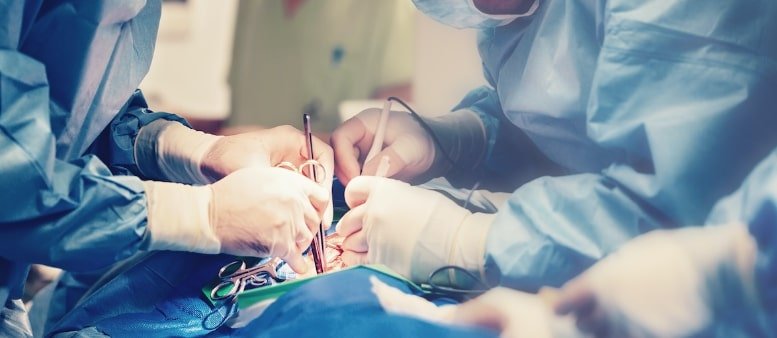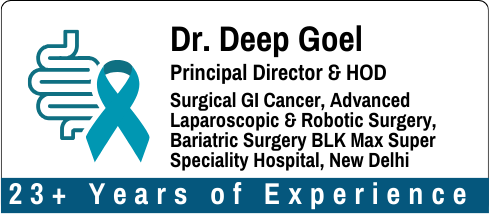What Are the Differences Between Minimally Invasive Surgery and Open Surgery for Gallbladder Cancer?

Gallbladder cancer is ranked 25th among all cancers, with about 115,949 gallbladder cancer cases worldwide, with 74,887 (females) and 41,062 (males) that need to be treated in a timely manner. With the advancement of medical technology, this disease can be treated with the help of two methods: minimally invasive laparoscopic surgery and open cholecystectomy. The two methods each have their own advantages and have to be weighed in view of factors such as the stage of cancer, the patient’s general state of health, and the experience of the surgeon.
Dr. Deep Goel, at the forefront of GI cancer surgery, emphasises individualised staging in an effort to deliver improved outcomes and a quicker, more streamlined process for the patient. His deep understanding and experience with the management of advanced gallbladder cancer led him to be an authoritative expert in this area.
What is Laparoscopic Surgery for Gallbladder Cancer?
Laparoscopic surgery, also known as minimally invasive surgery, is a procedure for small incisions in the abdomen. With the aid of these small channels, cameras and instruments are inserted to perform surgery. The surgeon has access to the procedure via a high-definition monitor, presenting a high-resolution image of the region to be processed in order to provide the necessary precision.
A happy patient of Dr. Deep expressed his satisfaction by saying, “I underwent laparoscopic gallbladder surgery with Dr. Deep Goel, and I am pleased with the result. In general, the whole experience turned out to be much less stressful as it was comparatively pain-free, and the recovery was very brief. I was back to my normal activity within 1 month. Dr. Goel’s expertise and the personalised care I received made all the difference.”
What are the Benefits of Minimally Invasive Gallbladder Surgery?
- Smaller Incisions: Procedures performed with laparoscopy use tiny “keyhole” incisions and thus leave a low scar tissue appearance with less potential for postoperative complications (infection).
- Shorter Hospital Stay: The procedure is less invasive; most patients experience a quicker recovery, often allowing them to leave the hospital within one to two days.
- Faster Recovery: Postoperative recovery is, as a rule, shorter following a laparoscopic procedure than following an open procedure. A significant proportion of patients are able to be discharged within 2-4 weeks for routine activities.
- Lower Infection Risk: The very small incisions prevent infection, and therefore, it is a good point for healing.
- Improved Precision: The latest imaging methods applied to laparoscopic surgery provide the operative surgeon with a better and more acceptable image of the tissue, in that to achieve better accuracy in the procedure.
What is the Cost of Laparoscopic Surgery?
Laparoscopic surgery may have a higher upfront cost due to the required specialised technology and equipment. Yet, the total cost may save costs in the long run. With fewer hospital stays and fewer days in recovery time, it reduces the overall cost of postoperative care.
The estimated cost of laparoscopic surgery ranges from INR 40,000 to INR 1,50,000 (USD 482 to 1,900). However, it can vary depending on various factors.
What is the Recovery Time for Laparoscopic Surgery?
- The extent of recovery in most patients is within 2-4 weeks, depending on both their health status and the complexity of surgery.
- After intervention, patients might have to adhere to dietary recommendations and visit for follow-up evaluation.
What is Open Cholecystectomy for Gallbladder Cancer?
Open cholecystectomy is the classical operation to remove the gallbladder, with a major opening in the abdomen. This methodology is adopted most of the time when cancer is advanced or complications are predicted. With the larger incision, the surgeon can have better direct percutaneous access to the gallbladder and its adjacent structures.
One of Dr. Deep’s happy patients expressed his gratitude: “My anxiety increased when, at the surgery approach, it was detected that I have gallbladder cancer. However, Dr. Deep Goel’s professionalism and lucid explanation of the open cholecystectomy approach eased my mind. The surgery was successful, and the postoperative period was much faster than I thought it would be. I am currently leading a healthy and active lifestyle, and I am very grateful that I received the care from Dr. Goel and his team”.
What are the Benefits of Open Cholecystectomy Invasive Gallbladder Surgery?
- Better access to advanced tumors: Offers a more extensive incision that provides enhanced visibility and access to deep or large tumours.
Ideal for complex or metastatic cases: Adaptable to situations where cancer has metastasised or has progressed beyond the scope of laparoscopic approach. - Ensures complete tumour removal: Makes it more accurate and complete to excise the cancerous tissue.
- Improved visualisation of surrounding organs: For greater access for more direct visualisation, there is a more extensive incision.
- Effective for managing cancer spread: Aid to the removal of gallbladder cancer that has spread outside the gallbladder into other tissues.
- Reduces risk of incomplete resection: Provides a higher likelihood of wiping out all invasive primary tumour in the advanced stage.
- Minimises need for follow-up surgeries: Decreases the chance of the need for a subsequent operation by very thorough primary treatment.
What is the Cost of Open cholecystectomy?
- Although the upfront cost of open surgery is generally less than for laparoscopic surgery because there are fewer technological needs.
- The overall cost might increase due to longer hospitalisation and longer recovery.
- The increased demand for postoperative care also leads to an increase in overall costs.
- The estimated average cost of average of Open Cholecystectomy ranges between INR 75,000 to Rs 80,000 ((USD 904 to 964). However, it may vary depending on various factors.
What is the Recovery Time for Open cholecystectomy?
- Postoperative recovery is usually longer, being around 4-6 weeks.
- Patients may still require a certain amount of time to resume their usual daily activities.
- Due to the larger wound and the more invasive procedure, it may be considered necessary in some patients to have physical therapy to regain lost strength and mobility.
Which Factors to Consider When Choosing the Right Procedure?
When laparoscopic surgery should be chosen in place of an open cholecystectomy, there are a number of factors that should be taken into account:
- Stage of Cancer
Laparoscopic surgery is almost a prerogative in the treatment of some early-stage gallbladder cancer, whose tumour is restricted to a specific area. By contrast, open cholecystectomy is typically required at advanced stages when malignancy is metastasised outside the gallbladder.
- Overall Health
The health status of the patient is of crucial importance to guide us. Patients that have comorbid medical conditions, like heart disease or diabetes, could need a more unique implementation.
- Surgeon Expertise
Dr. Deep’s experience in both laparoscopic and open surgery guarantees appropriate care for the individual patient’s condition. Especially an expert surgeon is indispensable for dealing with the intricacy of gallbladder cancer treatment.
- Patient Preference
There are patients who would prefer laparoscopic surgery as less invasive and, thus, smaller scars obtained with a faster process. Others may feel more comfortable with the open surgery option, especially in more advanced stages of cancer.
- Hospital Facilities
The availability of sophisticated surgical instruments and postoperative medical care in the hospital must also be taken into account, as these constitute determining factors in the kind of operation that can be performed.
What are the Post-surgery Care and Lifestyle Adjustments?
After cholecystectomy, patients are counselled to comply with each item of the proposed lifestyle changes to enable optimal and long-term postoperative recovery and benefit. Some important guidelines include
- Dietary Adjustments: Avoid fatty or oily foods to prevent digestive discomfort. Following a healthy, balanced diet is essential.
- Stay Active: Gentle exercise as prescribed by the doctor to promote healing and to get back to normal muscle strength.
- Attend Regular Checkups: Standardised follow-up visits are crucial to monitor healing as well as to detect potential complications as soon as possible.
- Manage Symptoms: Patients may be informed of any gastrointestinal symptoms and should inform their doctor if they are not resolved.
Conclusion
Both minimally invasive laparoscopic surgery and open cholecystectomy can be used for the treatment of gallbladder cancer. Laparoscopic surgery has the advantages of a minimal incision, early recovery, and a shorter hospital stay and has been considered a surgical option for early-stage cancer.
In contrast, a more severe condition may warrant open cholecystectomy. Cancer stage, patient status, surgeon’s experience, and patient preference are among the factors influencing the choice of the optimal operation.
Dr. Deep’s experience combined with surgical procedures provides a basis that each patient can receive the treatment plan that is optimal for them, thereby offering the best possible results.
FAQs
1. What is the best surgery for gallbladder surgery?
Laparoscopic cholecystectomy offers quick recovery using small incisions for gallbladder removal.
2. What diet should I follow after gallbladder surgery?
Post-surgery, a high-fiber, low-fat diet based on smaller, more frequent meals is prescribed to help digestion and alleviate pain.
3. What percentage of gallbladder surgeries are successful?
The rate of surgical success in gallbladder procedures is usually higher than 90%, depending on the patient’s condition and the disease stage.
4. Can I live a normal life after gallbladder surgery?
Yes, most patients can resume a normal life following a cholecystectomy, keeping in mind proper care and lifestyle modification.
5. Are minimally invasive surgery and open surgery equally effective for gallbladder cancer treatment?
Both aim to remove gallbladder cancer, but their effectiveness depends on the cancer stage and the precision of the chosen approach.
Explore more blogs: Is-Gallbladder-Cancer-Curable

